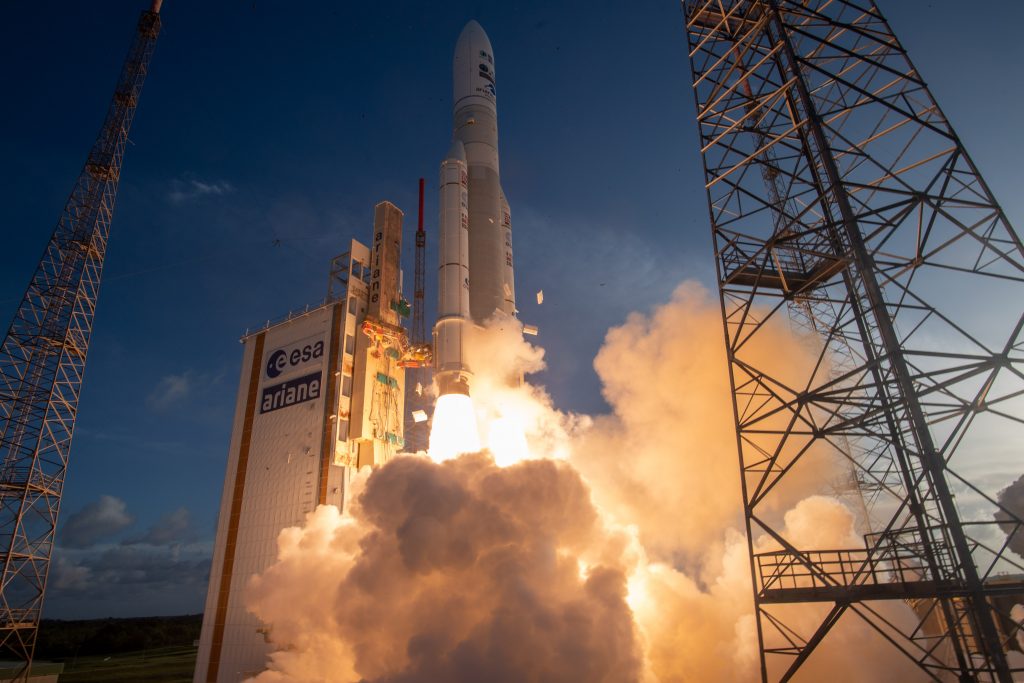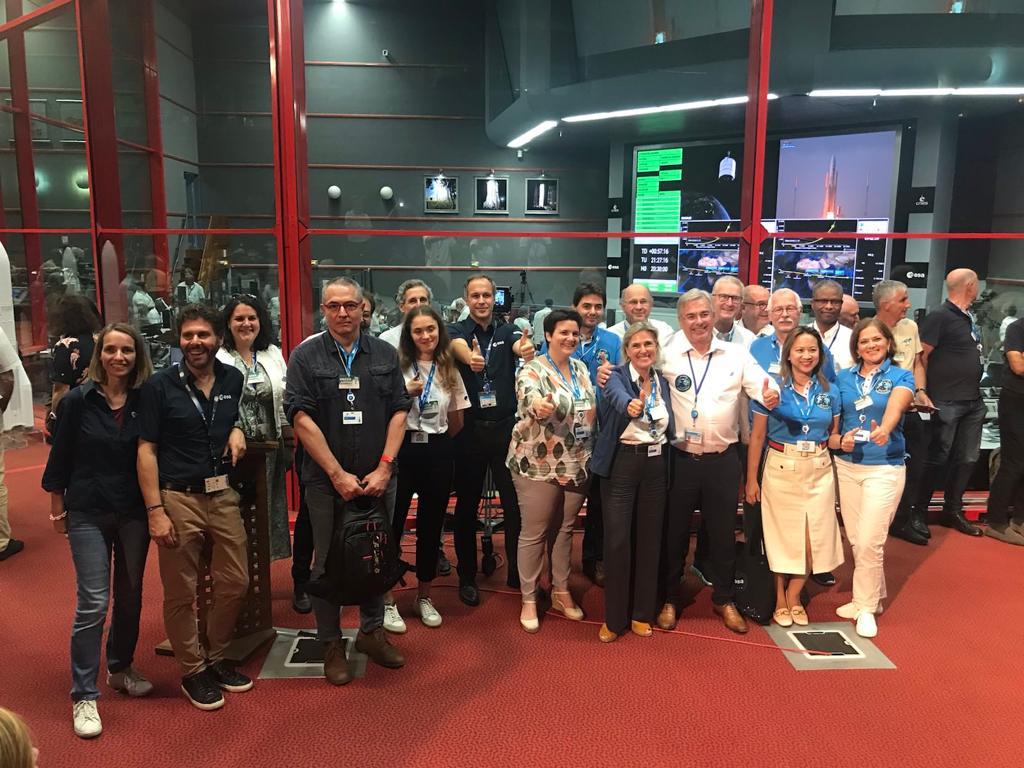The Meteosat Third Generation Imager satellite, set to revolutionise short-term weather forecasting in Europe, lifted off on an Ariane 5 rocket at 21:30 CET (17:30 local time in Kourou) on 13 December from Europe’s Spaceport in French Guiana. The satellite separated from the rocket 34 minutes later and then Malindi ground station in Kenya received the signal from MTG-I1, indicating the satellite is in good health.
Building on the long-standing partnership between ESA and the European Organisation for the Exploitation of Meteorological Satellites (Eumetsat), the Meteosat Third Generation Imager-1 (MTG-I1) is the first of a new generation of satellites providing crucial observations for the early detection and prediction of fast-developing severe storms, weather forecasting and climate monitoring.

Ariane 5 takes MTG-I1 into orbit (credits: ESA–M. Pedoussaut)
This third generation of weather satellites will not only guarantee the continuity of data for weather forecasting from geostationary orbit for the next two decades, but also offers significant enhancement of the current imager capabilities and near realtime lightning imaging – a new capability for European weather satellites.
Paul Blythe, ESA’s Meteosat Programme Manager, commented, “After over a decade of close cooperation and hard work of all involved, to see the first of the MTG-I satellites take to the skies is a profound experience for me.

A happy team in Kourou (credits: ESA)
Thanks to all who have made this possible including our friends in the industrial teams throughout Europe ably led by Thales Alenia Space France, my ESA team who have supported me throughout, many of whom have been with me since the start of this adventure and Eumetsat our partners and ultimately owners of the MTG satellites.
“Most recently a big thank you must go to Arianespace and those at Europe’s Spaceport in French Guiana for what has been a flawless launch campaign which has culminated in this beautiful launch.”
MTG-I1’s journey to space
Thirty-four minutes after launch, MTG-I1 separated from the Ariane 5 at an altitude of 250 km starting the automated post-separation sequence including solar array deployment and orientation towards the Sun ensuring the safety of the satellite. In its initial few orbits around Earth, the team switched on the satellite to open its solar arrays, and turned them to face the Sun.
From there, the team will boost the satellite from the initial geostationary transfer orbit, which is highly elliptical, to the circular geostationary orbit through a series of burns from the main apogee engine. This phase lasts around five days from where it will be positioned close to its final operational location at zero degrees longitude directly over Ivory Coast.
MTG-I1 and its two rideshare partners – Intelsat’s Galaxy 35 and Galaxy 36 telecommunications satellites – made up a total payload mass close to 11 tonnes, including the adapter that stacked them up for the ride to space. That is very nearly the mass record for an Ariane 5 launch to geostationary transfer orbit.
For more details on the launch, visit the Meteosat Third Generation website.

Discussion: no comments